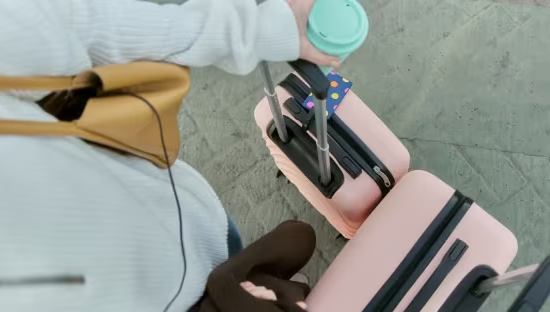
Seamless, Digital, Sustainable: The New Passenger Demands in Air Travel
Travelers are no longer waiting for the aviation industry to catch up—they’re demanding it. That’s the loud message coming out of the 2025 Travelers’ Voice: SITA Passenger IT Insights report, which surveyed more than 7,500 passengers in 25 countries right at the heart of their journeys: just before take-off and right after landing.
The findings? Travelers want air travel to move at the pace of their lives—seamless, digital, and sustainable. And they’re increasingly vocal about it.
Passengers Have Changed—Have Airlines?
One of the standout insights from the report is just how much passengers themselves have already shifted their expectations. As David Lavorel, CEO of SITA, put it:
“Passengers aren’t resisting change. They’ve already changed. They’ve gone digital. Now it’s our turn.”
The message is blunt: the industry isn’t leading this transformation; it’s playing catch-up.
Since 2020, mobile adoption in travel has surged by 20 percentage points, and digital-first generations are now setting the baseline. These travelers don’t think of “digital” as an add-on—it’s the default. They expect mobile-based updates, shorter airport waits, and seamless intermodal connections across rail, air, and road.
That shift echoes a wider digital reality: today’s travelers are banking, shopping, and working from their phones. Travel must meet the same standard of simplicity.
The Case for Simplicity
When asked what they want most, nearly two in three passengers said faster airport processing. Another 42% asked for a single integrated ticket that could cover multiple modes of transport.
This is where the aviation sector collides with rail and road transport. For years, European carriers and rail operators have toyed with the promise of multimodal integration, but progress has been slow. Meanwhile, companies like Trainline and Lufthansa Express Rail have shown the possibilities of one-ticket convenience—but adoption remains patchy.
SITA’s survey highlights that demand isn’t marginal anymore. A single unified ticket across air, rail, and road is no longer a “nice to have”; it’s becoming an expectation.
Biometrics and Digital IDs: From Sci-Fi to Standard
Only a few years ago, biometric boarding and digital identity storage sounded futuristic. Now, passengers not only expect it, but they’re willing to pay for it.
- Nearly 80% are ready to store their passport on their phone.
- Two-thirds would pay for that convenience.
That’s not surprising if you look at the wider digital identity market. According to Juniper Research, global adoption of digital IDs will grow from 155 million users today to 1.27 billion by 2029.
Airports in Singapore, Dubai, and select U.S. hubs are already piloting biometric boarding on a large scale. The technology is here; the bottleneck is regulatory frameworks and cross-border acceptance. Until governments align on standards, travelers will face patchwork experiences—seamless in one airport, frustratingly manual in the next.
Trust and Baggage: Beyond the Old Pain Points
For decades, baggage mishandling was the ultimate passenger pain point. Now, mishandling rates are at historic lows thanks to smarter tracking technologies and IATA’s Resolution 753 on baggage tracking.
Still, 78% of passengers say they would pay for end-to-end baggage services. Why? Because in travel, trust is currency. Even with improved systems, passengers want guarantees. They’re signaling that they value reassurance as much as speed.
This aligns with the broader “trust economy” in travel, where reviews, guarantees, and transparent data are shaping buying decisions. In other words, it’s not just about whether baggage gets lost less often; it’s about whether the traveler believes the airline has their back if something does go wrong.
Sustainability: The New Dealbreaker
Convenience is one side of the coin; sustainability is the other. Nearly 90% of passengers said they would pay more to reduce emissions, with many willing to fly slower or pack lighter to cut their footprint.
This mirrors findings from McKinsey & Company’s 2024 Consumer Sentiment on Sustainable Aviation, which showed 85% of European travelers consider CO₂ impact when booking flights. It also resonates with IATA’s pledge for net-zero emissions by 2050 — though skepticism remains about how fast progress is being made.
The report underlines that sustainability is no longer a “side note” in the travel conversation. It is central. Travelers aren’t just asking airlines to offset emissions with vague promises; they’re asking for measurable, tangible action.
Intermodal Travel: Blurring the Lines
Another big shift is the growing appetite for intermodal journeys, with 70% of passengers planning at least one intermodal trip this year.
This opens both opportunities and challenges. On one hand, airlines that integrate with rail (like Air France–TGV Connect or Lufthansa’s DB partnership) can capture new revenue streams while offering customers the simplicity they want. On the other hand, fragmented systems and national barriers continue to make cross-border multimodal integration complex.
Still, the direction is clear: passengers don’t see themselves as “air-only” travelers anymore. They want travel to be door-to-door, not airport-to-airport.
The Urgency Gap
The real takeaway from SITA’s Travelers’ Voice 2025 is not about technology itself, but about urgency. Biometrics, digital IDs, and integrated ticketing already exist. The tools are here. What’s missing is industry-wide alignment and speed of implementation.
As Lavorel bluntly put it:
“We’re asking passengers to adapt to travel. But they’re asking travel to adapt to them.”
Conclusion: A Market Moving Faster Than Its Gatekeepers
What makes this year’s insights striking is how they line up with broader industry trends. Passengers’ digital-first expectations echo what we’re seeing in hospitality (with Marriott’s app-first loyalty ecosystem), rail (with Europe’s move toward integrated ticketing), and payments (where companies like Revolut and Wise have set the standard for seamless, mobile-first experiences).
Compared to aviation, these sectors have been quicker to close the gap between consumer expectations and industry delivery. Airlines risk falling behind if they treat digital and sustainable transformation as optional add-ons.
Competitors like Singapore Airlines and Emirates have already moved aggressively into biometric boarding and digital convenience. Low-cost carriers like Ryanair and easyJet have embraced mobile-first engagement, though with less emphasis on sustainability. Meanwhile, Europe’s rail ecosystem is moving steadily toward multimodal integration—potentially leapfrogging aviation in meeting passenger expectations for simplicity.
The lesson is clear: passengers are no longer passively accepting friction. They’re actively reshaping the market with their choices and their wallets. If airlines don’t adapt quickly, others—from rail operators to super apps like Trip.com—will.
Travel is no longer just about planes, trains, or baggage. It’s about experiences that are seamless, sustainable, and trusted from end to end. The passengers have already moved. Now, it’s the industry’s turn.









